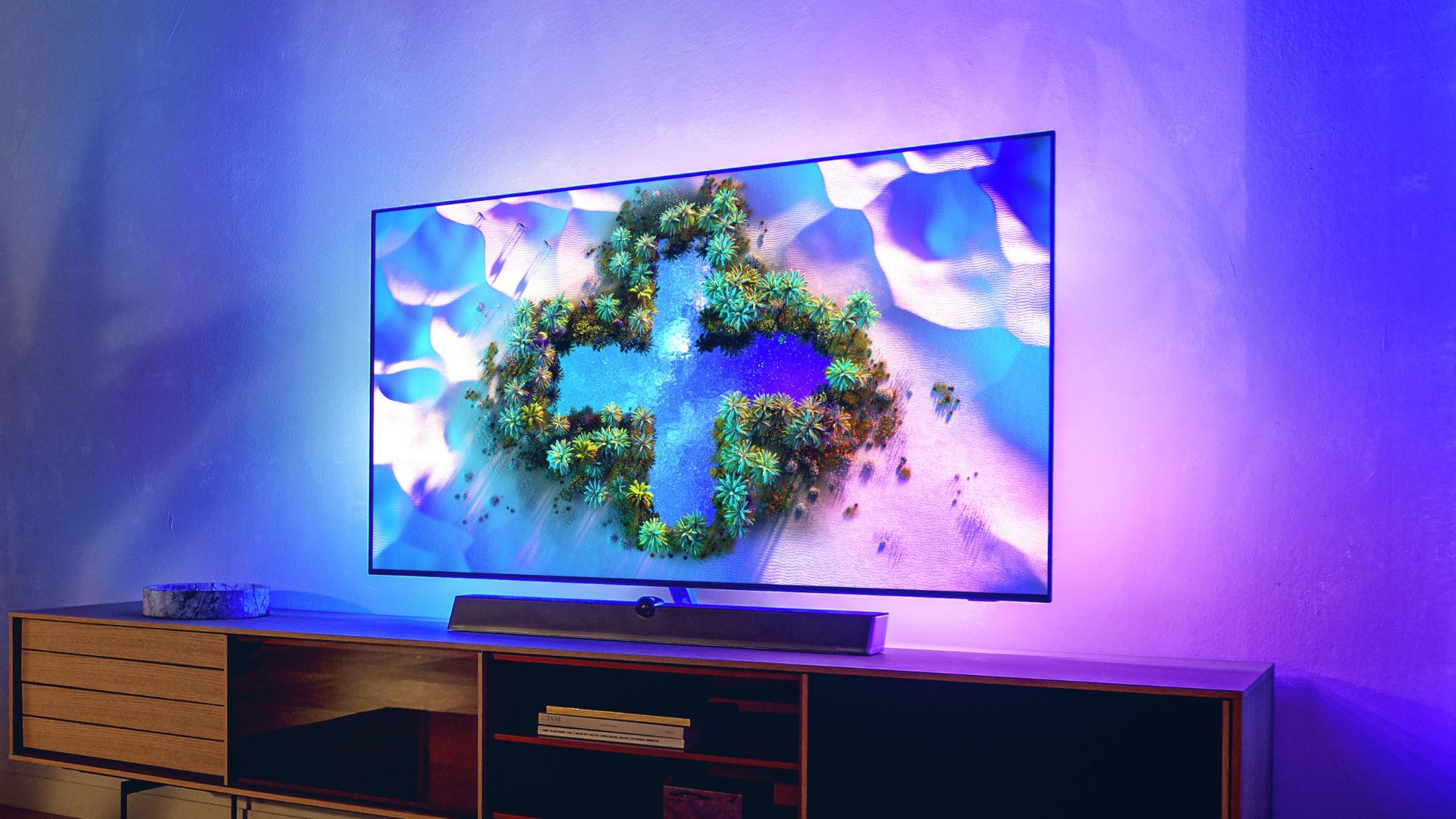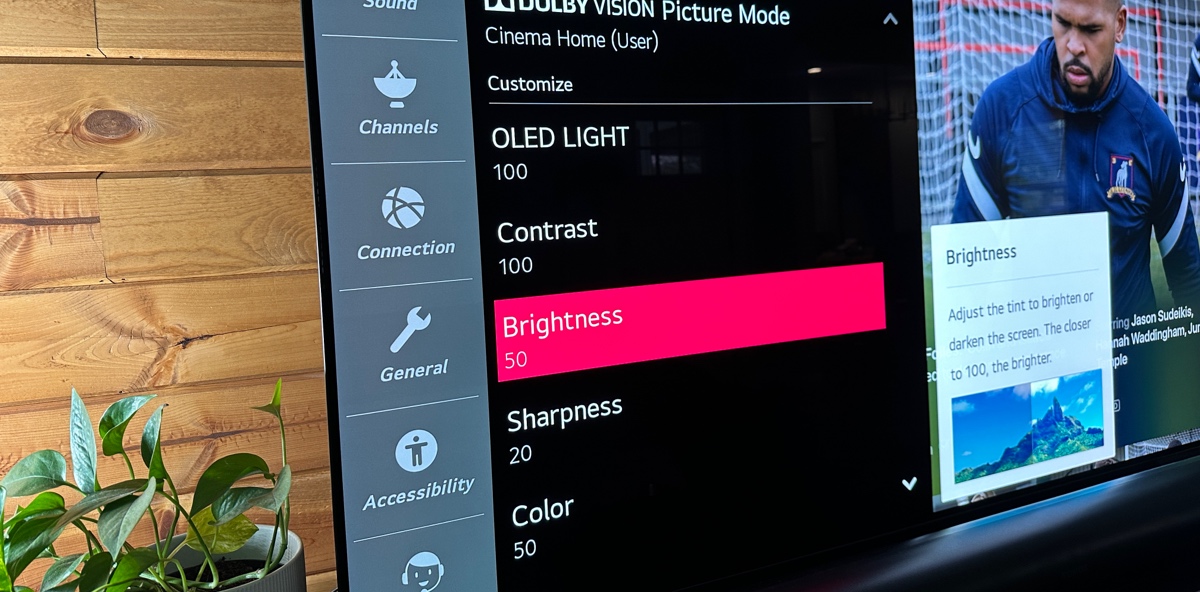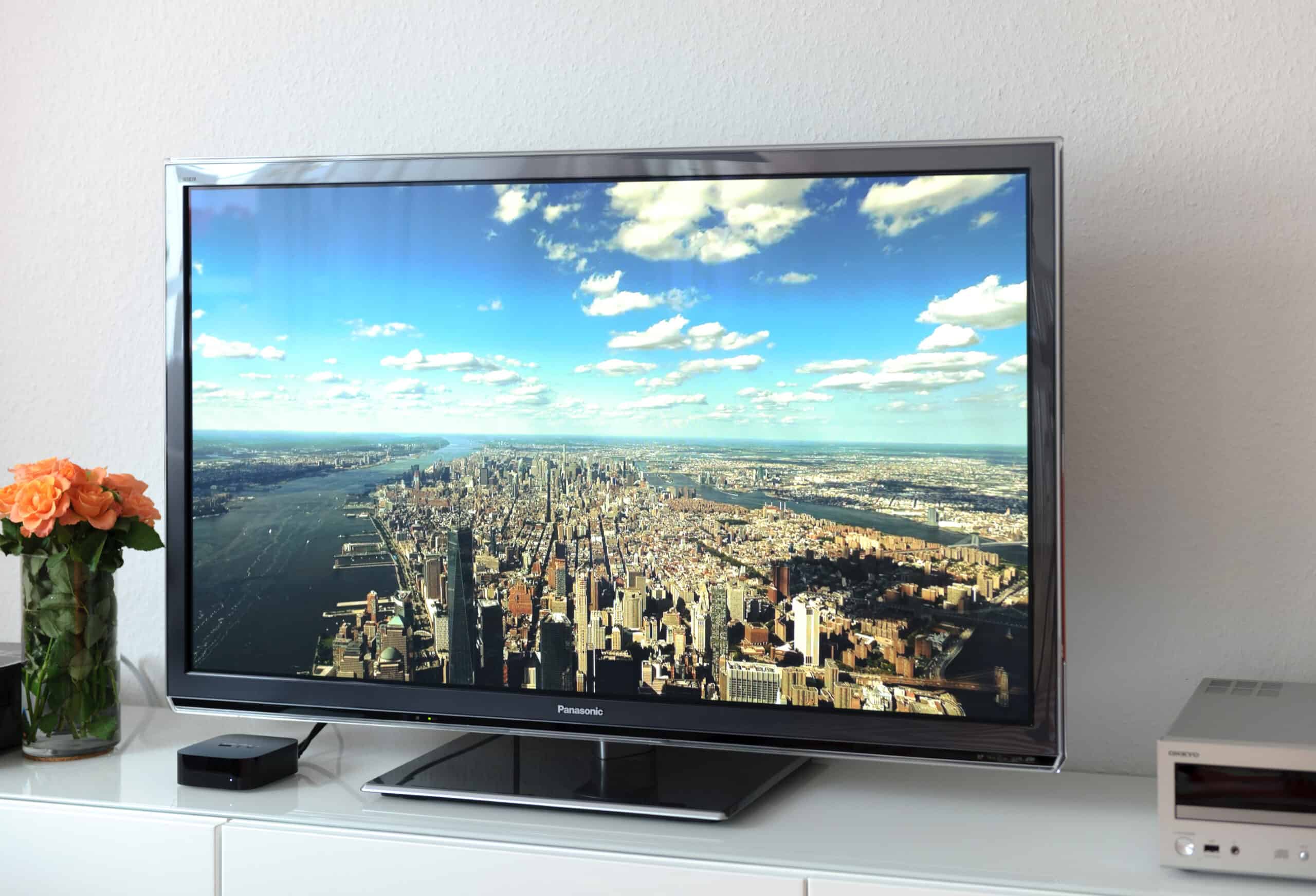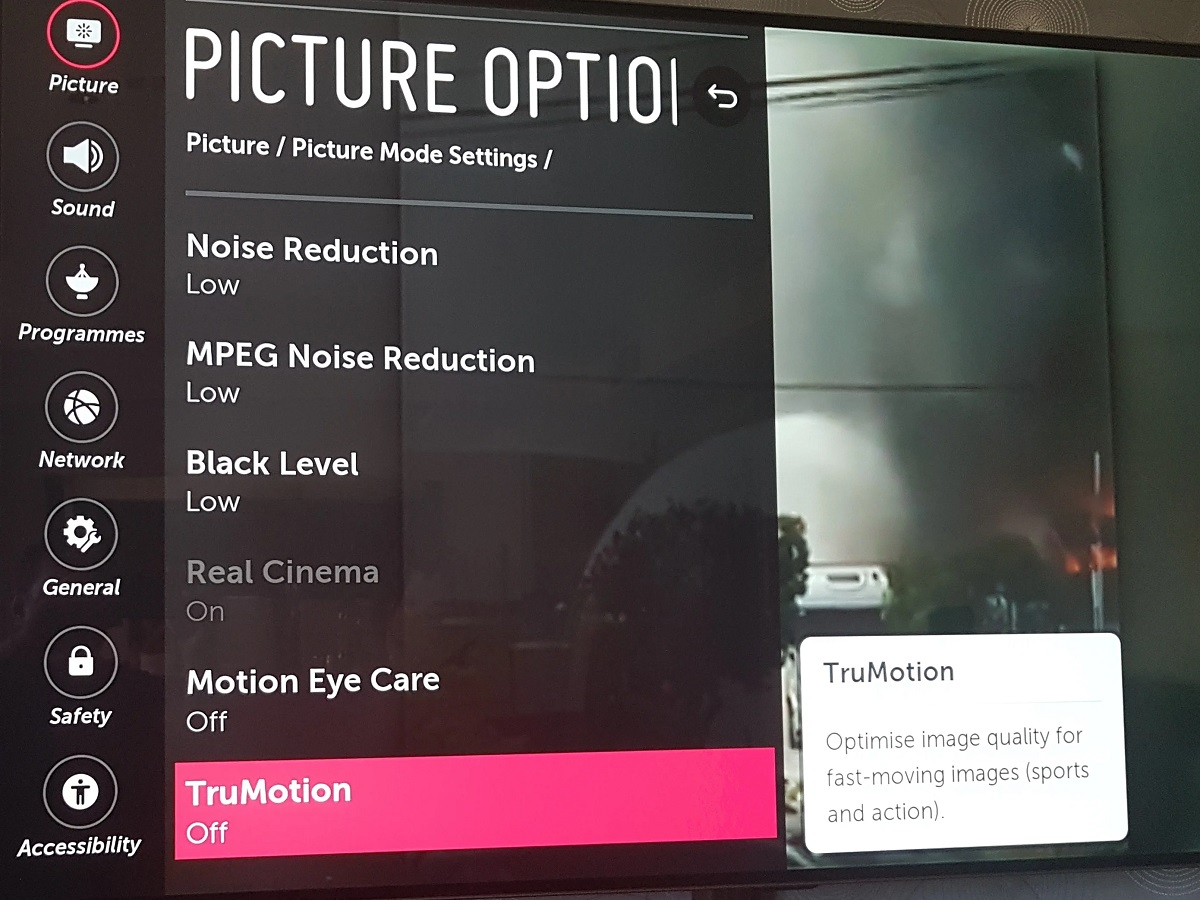Introduction
OLED TVs have revolutionized the way we experience television with their stunning picture quality and vibrant colors. One key factor that contributes to the visual appeal of OLED TVs is their brightness. Being able to produce bright and vivid images is essential for an immersive viewing experience, whether you’re watching your favorite movie, playing a video game, or streaming content on a streaming platform.
But how bright are OLED TVs exactly? In this article, we will explore the world of OLED technology and delve into the factors that determine their brightness levels. We will also compare OLED TVs with LED TVs, which are known for their brightness, and uncover the truth behind OLED’s brightness capabilities.
Understanding how OLED technology creates brightness and the various factors that can influence it will help you make informed decisions when choosing an OLED TV. Whether you’re a tech enthusiast, a home entertainment lover, or someone looking to upgrade their television, this article will provide valuable insights into the brightness of OLED TVs and how it can enhance your viewing experience.
What is OLED?
OLED stands for Organic Light-Emitting Diode, and it is a display technology that is increasingly being used in TVs, smartphones, and other electronic devices. Unlike traditional LED (Light-Emitting Diode) displays, where a backlight is required, OLED displays work by emitting light directly from each individual pixel. This unique feature allows OLED TVs to deliver exceptional picture quality with deep blacks, rich colors, and high contrast ratios.
At the heart of each OLED pixel is an organic substance that emits light when an electric current passes through it. This organic layer is made of carbon-based materials, which are arranged in a thin film. When the current is applied, the electrons in the organic material become excited and move to a higher energy state. As the electrons return to their original state, they release light photons, resulting in the illumination of the pixel.
The self-emissive nature of OLED pixels enables them to switch on and off individually. This capability allows for precise control over the brightness and contrast of each pixel, achieving deeper blacks and brighter whites compared to LED displays. Additionally, since OLED pixels emit their light, there is no need for a backlight, making OLED TVs thinner and more flexible.
Another significant advantage of OLED technology is its wide viewing angles. Unlike LCD displays that can experience color shifts and loss of brightness when viewed from an angle, OLED displays maintain consistent picture quality regardless of the viewing position. This makes OLED TVs ideal for large living rooms or family gatherings, where everyone can enjoy an optimal viewing experience regardless of their seating position.
In summary, OLED is a display technology that utilizes self-emissive pixels to deliver exceptional picture quality with deep blacks, vibrant colors, and wide viewing angles. Its unique organic composition and individual pixel control have made OLED TVs a popular choice among consumers seeking a visually captivating and immersive viewing experience.
How Does OLED Create Brightness?
OLED technology creates brightness by utilizing the self-emissive nature of its pixels. As mentioned earlier, each pixel in an OLED TV emits its own light when an electric current passes through it. This means that the brightness of each pixel can be controlled independently, resulting in precise and dynamic illumination.
When an OLED pixel receives an electric current, it excites the organic material within it, causing it to emit photons of light. The brightness of the pixel is determined by the intensity of the current. By adjusting the current to each individual pixel, OLED technology can create varying levels of brightness across the display, providing a high degree of control over the image.
Furthermore, OLED displays can achieve true blacks by completely turning off the pixels. When a pixel is not receiving any electrical current, it does not emit any light. This ability to turn off individual pixels allows OLED TVs to produce deep blacks, enhancing the overall contrast of the image.
Another aspect that contributes to OLED’s brightness capabilities is its use of color filters. Each pixel in an OLED display is equipped with a color filter that determines the color emitted by the pixel. By adjusting the intensity of the electric current and the color filter, OLED technology can produce vibrant and accurate colors that contribute to a visually appealing and lifelike image.
Additionally, OLED displays offer high peak brightness levels, which refers to the maximum brightness a TV can achieve in specific areas of the screen. This means that areas of the image that require intense brightness, such as highlights in HDR (High Dynamic Range) content, can be rendered with exceptional brightness and detail.
Overall, the combination of individual pixel control, the ability to turn off pixels for true blacks, color filters, and high peak brightness levels make OLED technology capable of creating bright and visually striking images. Whether you’re watching a brightly lit scene in a movie or playing a video game with vibrant graphics, OLED’s brightness capabilities can enhance your viewing experience and bring the content to life.
OLED vs. LED: Which is Brighter?
When it comes to comparing the brightness of OLED and LED (Light-Emitting Diode) displays, it’s important to consider their underlying technologies and how they achieve brightness.
LED displays, commonly found in LED-backlit LCD TVs, rely on a backlighting system for brightness. The backlight is positioned behind the LCD panel and illuminates the pixels on the screen. The brightness of the display depends on the intensity of the backlight, which can be adjusted to control the overall brightness of the image.
On the other hand, OLED displays are self-emissive and do not require a backlight. Each individual OLED pixel emits its own light, allowing for precise control over the brightness of each pixel. This means that OLED displays have the potential to achieve higher levels of brightness compared to LED displays.
However, it’s important to note that the maximum brightness that an OLED TV can achieve in practice might not always surpass that of a high-end LED TV. LED TVs, especially those equipped with full-array local dimming, can provide impressive peak brightness levels, particularly in HDR content where highlights are emphasized.
Nevertheless, what gives OLED displays an advantage is their ability to deliver deeper blacks. With the ability to turn off individual pixels, OLED TVs can achieve true blacks, resulting in higher contrast ratios. This contrast enhancement contributes to a perceived sense of brightness, as bright objects stand out more vividly against a deep black background.
In summary, while OLED displays have the potential to achieve higher peak brightness levels in certain scenarios, LED displays, particularly those with local dimming capabilities, can still provide impressive brightness, especially in highlights. However, OLED’s ability to deliver true blacks and higher contrast ratios enhances the perceived brightness and overall visual impact of the image.
The Brightness Range of OLED TVs
When it comes to the brightness range of OLED TVs, it is important to note that different models and manufacturers may vary in their specific capabilities. However, OLED technology does offer a wide range of brightness levels that can enhance your viewing experience.
OLED TVs typically have a minimum brightness level of around 300-500 nits (a measure of brightness), which is sufficient for most normal viewing conditions. This level of brightness allows for clear and vibrant images, even in moderately lit rooms.
On the upper end of the brightness range, OLED TVs can achieve peak brightness levels of 700-1000 nits or sometimes even higher. These higher brightness levels are especially important for HDR (High Dynamic Range) content, which requires a high luminance range to accurately reproduce bright highlights and details.
While LED TVs can often reach higher peak brightness levels compared to OLED, it’s important to understand that OLED’s ability to deliver true blacks and high contrast ratios can enhance the perceived brightness of the overall image. The combination of deep blacks and bright highlights creates a dynamic and visually striking experience.
It’s worth mentioning that the brightness of OLED TVs can also be affected by various factors. Factors such as age, image content, and picture settings can influence the perceived brightness of the display. Additionally, ambient lighting conditions in your viewing environment can also have an impact on how you perceive the brightness of the screen.
When selecting an OLED TV, it is recommended to consider your specific viewing environment and preferences. If you plan on watching content in a bright room, you may want to opt for a model that has higher peak brightness levels to ensure optimal viewing clarity. On the other hand, if you usually watch content in a dimly lit or dark room, a model with slightly lower peak brightness may still provide an immersive experience while maintaining deep blacks and excellent contrast.
Overall, OLED TVs offer a wide brightness range that is capable of delivering vivid and lifelike images with deep blacks and bright highlights. With considerations given to factors such as HDR content, room lighting, and personal preferences, you can choose an OLED TV that best suits your viewing needs.
Factors that Affect OLED TV Brightness
While OLED technology offers impressive brightness capabilities, there are several factors that can affect the perceived brightness of an OLED TV. Understanding these factors is crucial in optimizing the visual experience and achieving the desired level of brightness.
1. Picture Settings: The picture settings on an OLED TV can have a significant impact on the perceived brightness. Adjusting settings such as backlight, contrast, and brightness can help optimize the image to your liking. It’s important to note that higher brightness settings may increase power consumption.
2. Ambient Lighting: The lighting conditions in the room can impact how the brightness of an OLED TV is perceived. Bright ambient lighting can result in reduced contrast and make the screen appear less bright. Dim lighting or watching in a dark room can enhance the perceived brightness and contrast, making the image appear more vibrant.
3. Content: The content being displayed on the OLED TV can affect the perceived brightness. Some content may have scenes or images that are naturally brighter or darker. Additionally, HDR (High Dynamic Range) content that includes a wider range of brightness levels may require higher brightness settings to fully appreciate the details in bright highlights.
4. Aging: Over time, OLED displays can experience a decrease in brightness due to organic material degradation. This is a characteristic of OLED technology, known as burn-in. While this issue has significantly improved over the years, it’s still important to be mindful of static images or logos that are constantly displayed for extended periods.
5. Color Gamut: The color gamut of an OLED display can also influence the perceived brightness. Wide color gamut displays tend to produce more vibrant and saturated colors, which can enhance the overall visual experience. However, they may appear to be slightly less bright compared to displays with a narrower color gamut.
6. Panel Quality: The quality of the OLED panel itself can play a role in brightness performance. Higher-end OLED TVs tend to have better panel quality, which can result in more accurate brightness levels, better uniformity, and improved overall performance.
It’s important to note that while these factors can impact the perceived brightness, OLED technology still offers impressive brightness capabilities. Adjusting the picture settings, taking into account the lighting conditions, and considering the content being viewed can help optimize the brightness experience on an OLED TV.
By being aware of these factors and making adjustments as necessary, you can ensure that your OLED TV delivers the desired level of brightness and an immersive viewing experience.
Can OLED TVs Be Too Bright?
One common concern when it comes to OLED TVs is whether they can be too bright for comfortable viewing. While OLED displays offer impressive brightness capabilities, it’s important to strike a balance to ensure an optimal viewing experience without causing discomfort or eye strain.
Most OLED TVs have a wide range of brightness settings that can be adjusted to suit your preferences and viewing environment. While some people may prefer a brighter image, others might find extremely bright settings overwhelming, especially in a dark room. Adjusting the brightness settings to your comfort level is crucial to avoid discomfort and fatigue.
In addition to adjusting the brightness setting, the ambient lighting conditions in your viewing environment can play a significant role in determining whether an OLED TV appears too bright. Brightly lit rooms or excessive reflections can create a glare on the screen and make it appear overly bright. On the other hand, watching in a dimly lit or dark room can enhance the perceived brightness and contrast of the OLED display.
It’s important to note that OLED TVs, like any other display technology, should not be used at excessively high brightness levels for prolonged periods. High brightness settings can not only cause eye strain but also increase power consumption and potentially impact the lifespan of the display. It’s recommended to find a comfortable brightness level that allows you to enjoy the content without causing any discomfort or strain.
Most modern OLED TVs come with features such as automatic brightness control that adjust the display’s brightness based on ambient lighting conditions. These features can help maintain a comfortable viewing experience and prevent the TV from becoming too bright or too dim in different environments.
Additionally, it’s worth noting that OLED TVs are generally capable of reproducing a wide range of brightness levels, including deep blacks and bright highlights. This ability to accurately represent both dark and bright scenes contributes to a more dynamic and visually appealing viewing experience.
In summary, while OLED TVs offer impressive brightness levels, determining whether an OLED TV can be too bright is subjective and dependent on personal preferences, viewing environment, and content being watched. Adjusting the brightness settings, considering ambient lighting conditions, and finding a comfortable viewing balance is crucial to ensure an enjoyable and comfortable experience.
OLED Brightness for Different Uses
OLED TVs offer versatile brightness levels that can cater to different uses and viewing preferences. The ability to adjust the brightness settings allows users to optimize their viewing experience based on the content being watched and the viewing environment.
1. Movie and TV Show Viewing: OLED TVs are well-suited for watching movies and TV shows, as they can deliver deep blacks and vibrant colors. For a cinematic experience, it’s recommended to dim the lights in the room and adjust the brightness setting to a comfortable level that allows for good visibility of dark scenes while preserving the details in bright scenes. This balance ensures an immersive and true-to-life viewing experience.
2. Gaming: Gaming enthusiasts can benefit from the impressive brightness capabilities of OLED TVs. Brightness settings can be adjusted based on personal preferences and the gaming environment. In highly competitive games where fast response times are crucial, setting the brightness slightly higher may help to better identify opponents and increase visibility in darker areas of the game. However, it’s important to avoid excessively high brightness levels, as they can cause eye fatigue during prolonged gaming sessions.
3. Sports and Live Events: Watching sports and live events on an OLED TV can be an exhilarating experience. Whether it’s a football match, a tennis tournament, or a live concert, OLED’s ability to produce vibrant colors and high contrast ratios enhances the visual impact of the event. Adjusting the brightness setting to match the lighting conditions of the event venue can help recreate the excitement and energy of the live experience.
4. Daytime Viewing: OLED TVs can be enjoyed during the day, even in brightly lit rooms. While OLED displays handle ambient light well, it’s recommended to reduce any glare by adjusting screen positioning and, if possible, controlling the amount of natural light entering the room. Adjusting the brightness setting to a level that produces a clear and visible image without causing eye strain is crucial for comfortable daytime viewing.
5. Nighttime Viewing: OLED displays shine in dimly lit or dark rooms, as they can achieve deep blacks and high contrast. Adjusting the brightness setting to a level that maintains deep blacks without causing eye strain is essential for a comfortable nighttime viewing experience. This allows you to enjoy the full capabilities of OLED technology while immersing yourself in the content.
It’s important to note that personal preferences and viewing environments can vary, so it’s recommended to experiment with different brightness settings and adapt them based on specific needs. Finding the right balance between brightness, image clarity, and overall comfort will ensure an enjoyable viewing experience for various uses and content types.
Tips for Enhancing OLED TV Brightness
While OLED TVs already offer impressive brightness capabilities, there are several tips and techniques you can implement to maximize and enhance the brightness of your OLED TV for an optimal viewing experience.
1. Adjust Picture Settings: Fine-tuning the picture settings on your OLED TV can significantly impact the perceived brightness. Experiment with the backlight, contrast, and brightness settings to find a balance that suits your preferences and the content you’re watching. Keep in mind that higher brightness settings may increase power consumption.
2. Optimize Ambient Lighting: The lighting conditions in your viewing environment can affect the perceived brightness of your OLED TV. Reduce glare and reflections by controlling ambient lighting. Consider using curtains or blinds to minimize natural light, or use dimmable lights to avoid excessive brightness that can diminish the contrast of the display. Watching in a dimly lit or dark room can enhance the perceived brightness and contrast of the OLED display.
3. Enable HDR and Dynamic Range Content: Take advantage of HDR (High Dynamic Range) content, as it can optimize the brightness and contrast capabilities of your OLED TV. HDR content contains a wider range of brightness levels, allowing for brighter highlights and increased detail in both bright and dark areas of the image. Ensure you have HDR-enabled sources and select HDR content to fully utilize the brightness range of your OLED TV.
4. Keep Software and Firmware Up to Date: Regularly update your OLED TV’s software and firmware to ensure optimal performance. Manufacturers often release updates that improve picture quality, including enhancements to brightness and overall display performance.
5. Prevent Image Retention and Burn-in: Image retention and burn-in are potential issues with OLED displays that can cause permanent damage to the screen. Avoid leaving static images or logos on the screen for extended periods, as this can lead to uneven brightness and potential burn-in. Utilize features like screen savers or pixel refreshing tools to mitigate these risks and extend the lifespan of your OLED display.
6. Consider Room Calibration: For the most accurate and optimized picture quality, consider professional room calibration. Experts can analyze your viewing environment and make precise adjustments to settings like gamma, color temperature, and white balance to ensure the best possible brightness and overall image quality for your OLED TV.
By implementing these tips, you can enhance the brightness and overall visual performance of your OLED TV. Adjusting picture settings, optimizing ambient lighting, enabling HDR content, keeping software up to date, preventing image retention and burn-in, and considering room calibration can elevate your viewing experience and make the most of your OLED TV’s capabilities.
Conclusion
OLED TVs have revolutionized the home entertainment experience with their exceptional picture quality and impressive brightness capabilities. The self-emissive nature of OLED technology allows for precise control over brightness, resulting in deep blacks, vibrant colors, and stunning contrast ratios.
In this article, we explored the world of OLED TVs and delved into the factors that affect their brightness. We learned that OLED displays create brightness through the individual control of each pixel, allowing for accurate and dynamic illumination. We also compared OLED with LED displays and discussed how OLED’s ability to deliver true blacks enhances the perceived brightness and overall visual impact.
We discovered that OLED TVs have a wide brightness range, offering both minimum and peak brightness levels that can be optimized for different viewing scenarios and environments. Adjusting picture settings, considering ambient lighting conditions, and selecting appropriate content are key to maximizing the brightness experience of an OLED TV.
We also provided tips for enhancing OLED TV brightness, such as adjusting picture settings, optimizing ambient lighting, enabling HDR content, keeping software up to date, preventing image retention and burn-in, and considering professional room calibration. These tips can help elevate the brightness and overall performance of an OLED TV, allowing viewers to enjoy a more immersive and visually captivating experience.
In conclusion, OLED technology represents a significant advancement in display technology, offering remarkable brightness capabilities that enhance the visual experience. Whether you’re watching movies, gaming, or enjoying live events, optimizing the brightness settings and considering the viewing environment can ensure the best possible viewing experience on your OLED TV. With their stunning picture quality and impressive brightness, OLED TVs continue to redefine home entertainment and provide viewers with immersive and lifelike visual experiences.

























